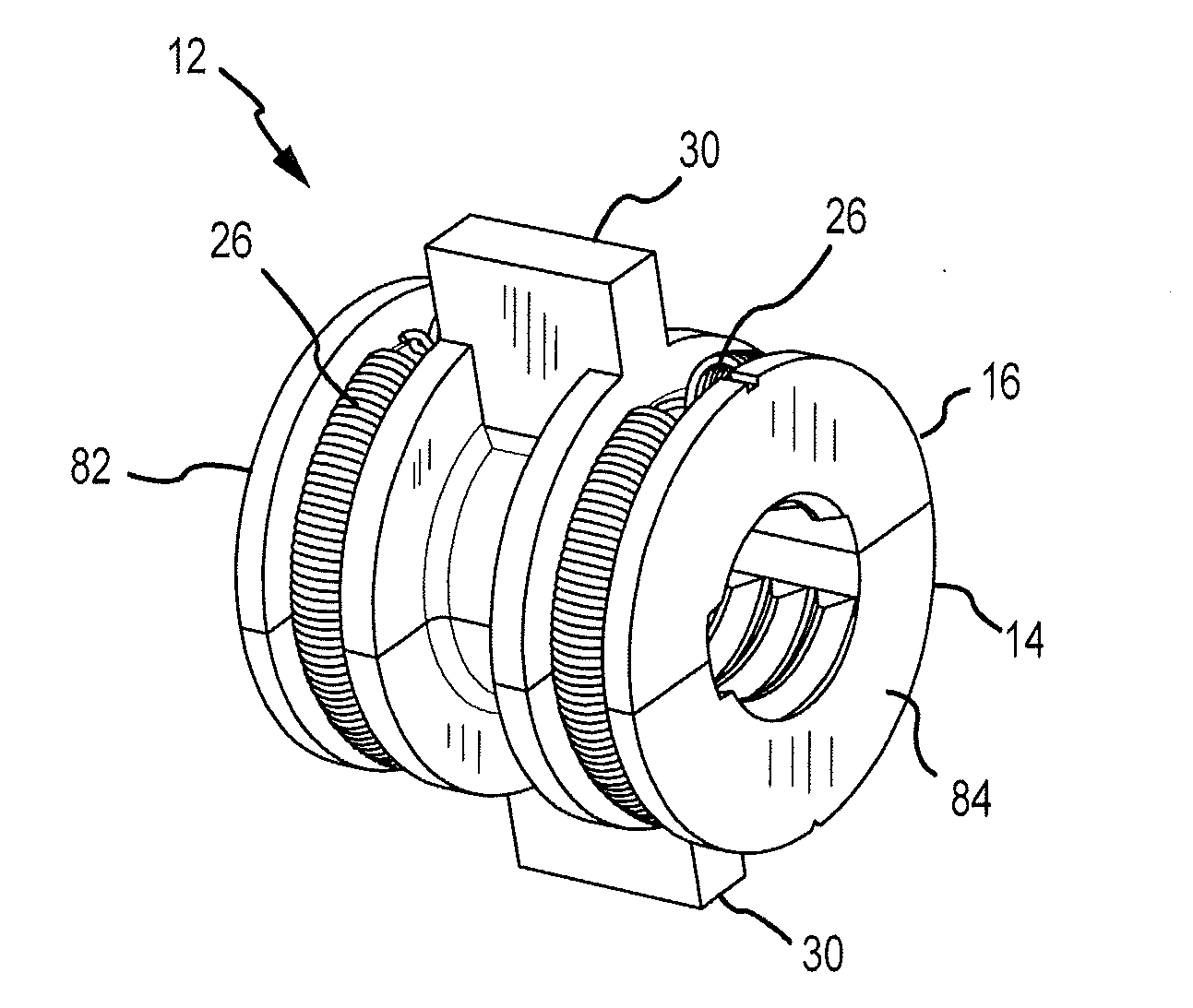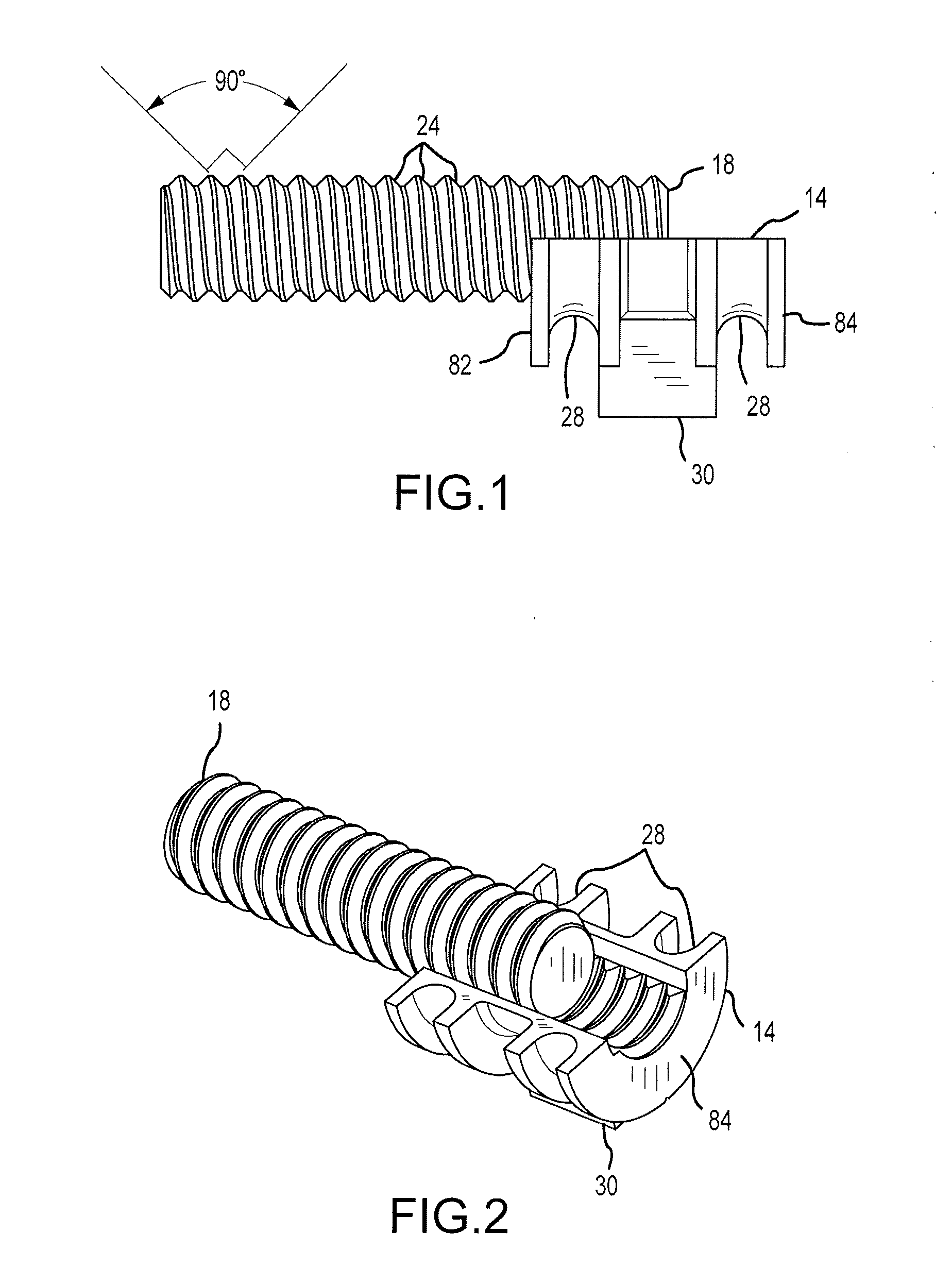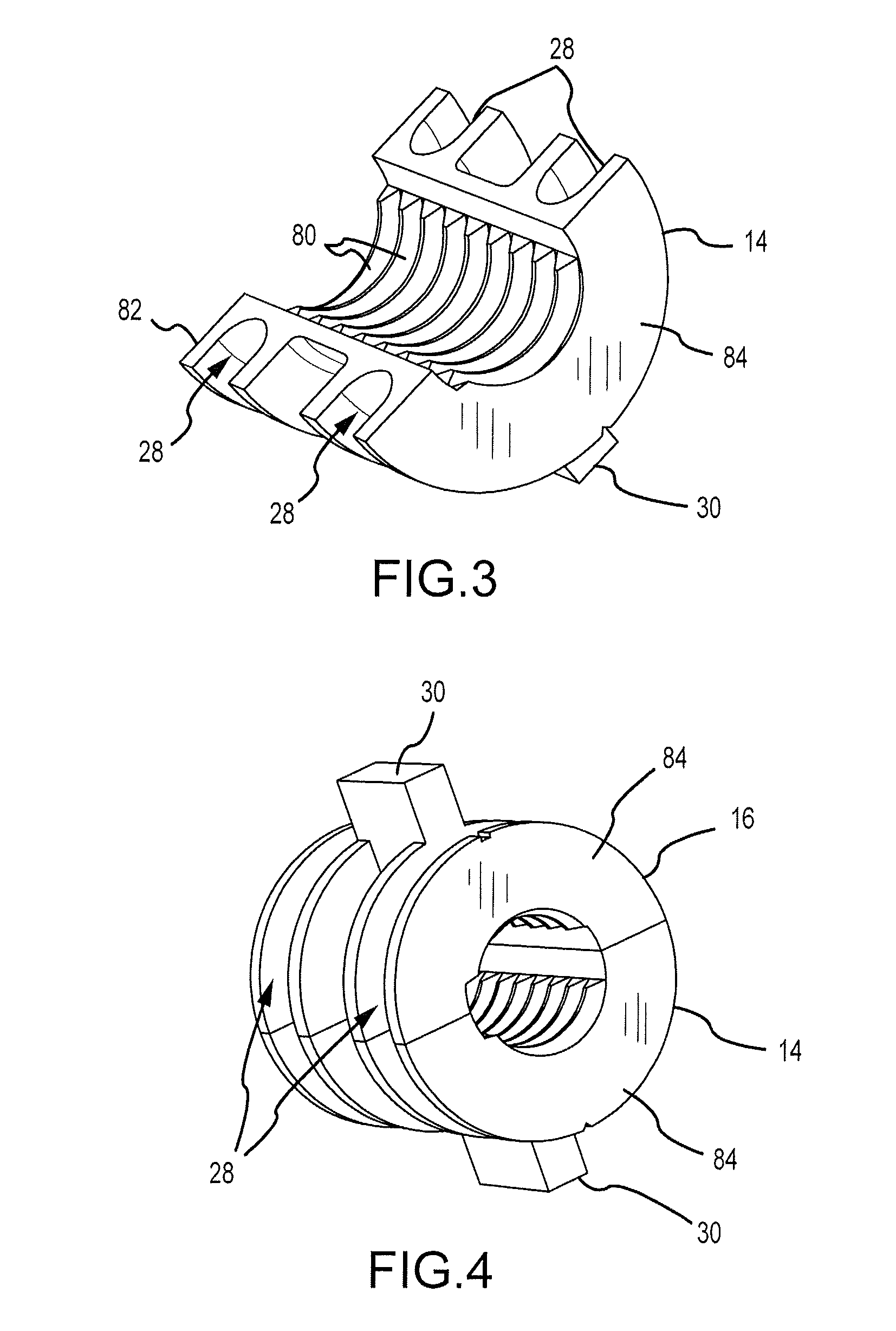Motor mechanism
a motor mechanism and mechanism technology, applied in the direction of mechanical equipment, latching mechanisms, hinges, etc., can solve the problems of increasing loading force, affecting the operation of the motor mechanism, and the inability of the door knob to actuate the bolt or latching mechanism and open the door, so as to reduce the cost, complexity and size of the motor mechanism, and reduce the cost. , the effect of less torqu
- Summary
- Abstract
- Description
- Claims
- Application Information
AI Technical Summary
Benefits of technology
Problems solved by technology
Method used
Image
Examples
Embodiment Construction
[0037]One embodiment of a motor mechanism 10 of the present invention will now be described. With reference to FIGS. 1-5 and 11, a split nut assembly 12 is shown. As illustrated, the split nut 12 comprises two half nuts 14, 16 which threadably engage and interact with a drive screw 18 mounted on the output shaft 20 of an electric motor 22. While two half nuts 14, 16 are shown in the accompanying figures, it should be appreciated that the split nut assembly be made of two or more pieces but preferably no more than four. In addition, not all of the pieces comprising the nut assembly are required to threadably interact with the threads 24 of the screw, although all of the components may threadably couple to the screw threads. Biasing members 26, such as springs or elastomeric rings, are positioned in channels 28 formed on the exterior of the half nuts to hold the half nuts in threaded engagement with the threads 24 of the screw 18. In the embodiment illustrated, each of the half nuts 1...
PUM
 Login to View More
Login to View More Abstract
Description
Claims
Application Information
 Login to View More
Login to View More - R&D
- Intellectual Property
- Life Sciences
- Materials
- Tech Scout
- Unparalleled Data Quality
- Higher Quality Content
- 60% Fewer Hallucinations
Browse by: Latest US Patents, China's latest patents, Technical Efficacy Thesaurus, Application Domain, Technology Topic, Popular Technical Reports.
© 2025 PatSnap. All rights reserved.Legal|Privacy policy|Modern Slavery Act Transparency Statement|Sitemap|About US| Contact US: help@patsnap.com



